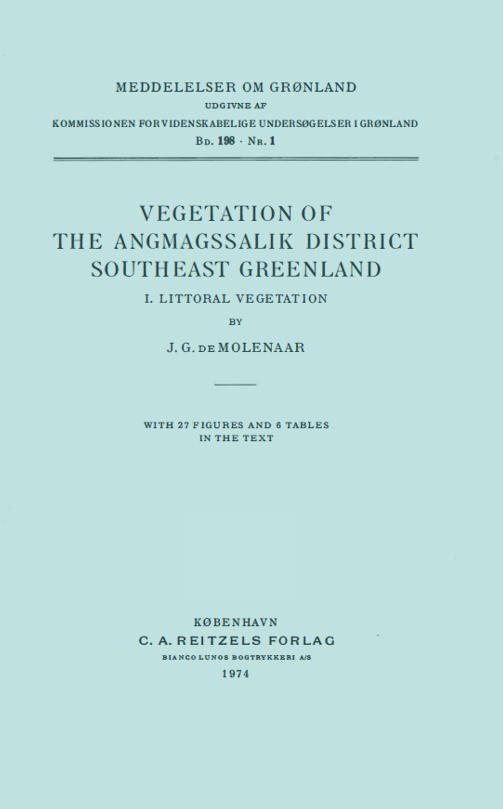Vegetation of the Angmagssalik District, Southeast Greenland. I. Littoral Vegetation.
Abstract
The present study deals with a part of the results of observations made during expeditions in 1968 and 1969 to the Angmagssalik District, the central and !argest deglaciated area on the Southeast coast of Greenland; which journeys were preceded by a reconaissance in 1966. The Angmagssalik District is a very mountainous area deeply cut by numerous fjords, and has a pronounced oceanic Iow-arctic climate. Its general physiography has no broad beaches and wide saline deltas where such extensive, luxuriant and very diversified littoral vegetation as those known from southern latitudes might develop. However, well-developed small stands are locally common in suitable, sheltered habitats andrepresent several clearly distinguishable vegetation types. The occurrence and the composition of the littoral plant communities appear to depend on the physiography of the littoral, the climate, the properties of the open water, the substrate, and of course also on phytogeographical and historical factors. Although the environmental factors have not been studied in great detail, they are dealt with rather thoroughly, since they are in many respects different from conditions prevailing at lower latitudes as, for example, in the intensively studied western and southern parts Europe. The littoral communities were described and classified according to the principles of the Zurich-Montpellier school. Two exclusive arctic and subarctic groups of communities are represented in the area, viz. the order Carici-Puccinellietalia and the order Honckenyo-Elymetalia arenarii: The first comprises salt marsh communities which are mainly restricted to the lower beach and sandy to silty substrates, the second is chiefly confined to the upper part of coarse sandy to stony beaches in more exposed conditions. A comparative study of the Carici-Puccinellietalia has led to a revision of the syntaxon, and shows that the associations grouped in this order form for the greater part pairs of vicarious, exclusively arctic and subarctic units at least in the northern
Atlantic area. These pairs are differentiated by the absence or presence of a group of widely spread boreal taxa of which the common northern area limit coincides with the boundary between the arctic and subarctic regions, so that their areas are pararegional with respect to the area of the order and its two alliances. All six associations of the Carici-Puccinellietalia are represented in the investigated area. Those of the Puccinellion phryganodis, which comprise the syn taxa that are as a rule confined to sheltered habitats on the lowest part of the beach in clayey to silty, sandy substrates poor in humus, are represented by lower units, except for the provisional new association Sagino-Phippsietum algidae. Those of the Caricion glareosae, which comprise the syntaxa restricted commonly to somewhat Jess sheltered habitats on the higher part of the lower beach in coarse, sandy, superficially strongly humic to peaty substrates, are represented by all known units. The Honckenyo-Elymetalia arenarii is represented by two sociations, which are presumably local, impoverished representatives of the territorial Greenlandic association
Honckenyo diffusae-Elymetum mollis or the widely spread, subarctic to arctic Honckenyo diffusae-Elymetum arenarii.
The results of the reclassification of the units of the Carici-Puccinellietalia in the northern Atlantic are summerized in a separate survey.

Downloads
Published
How to Cite
Issue
Section
License
Coypyright by the authors and the Commision for Scientific Research in Greenland. No parts of the publications may be reproduced in any form without the written permission by the copyright owners.

